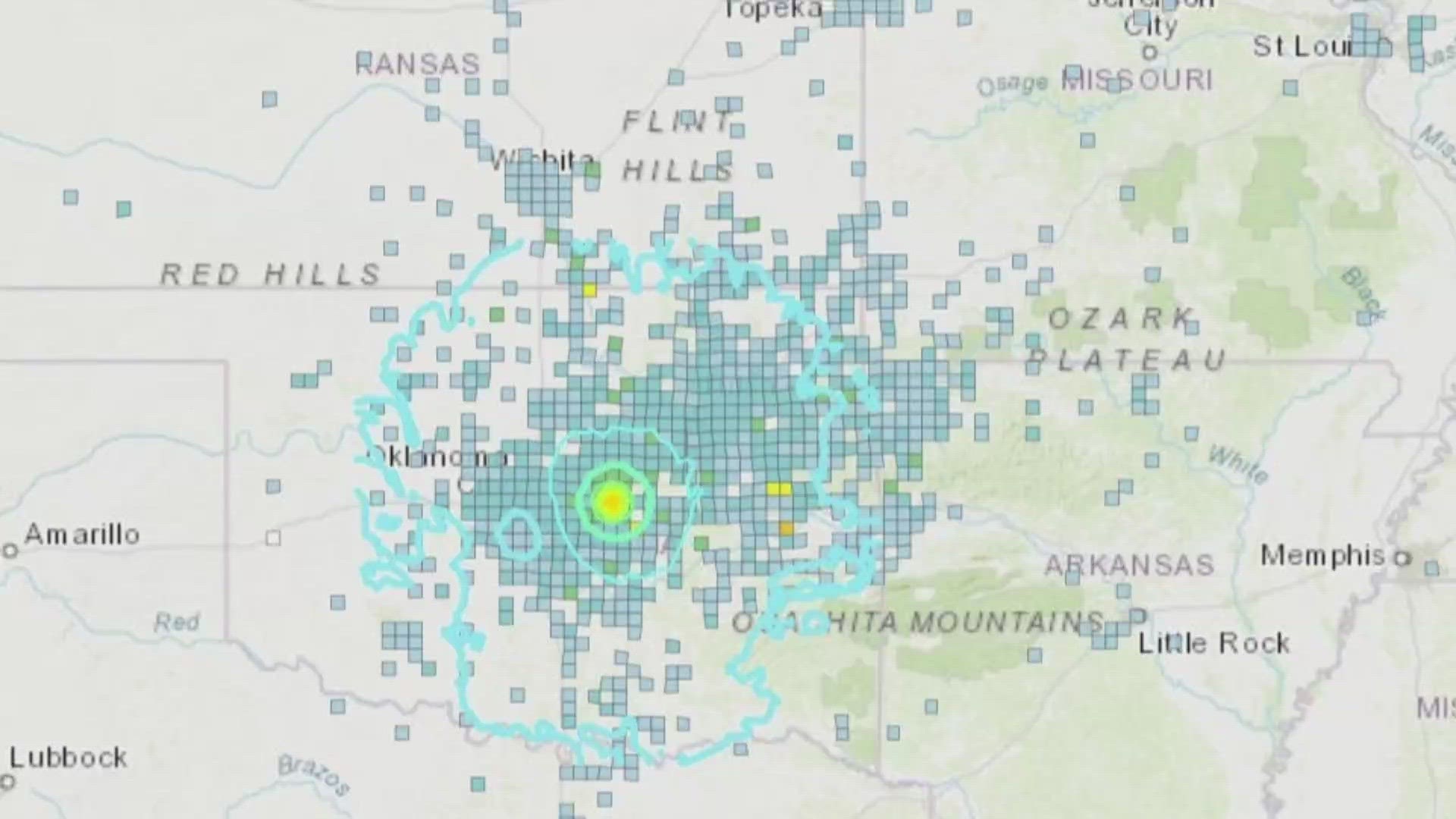ARKANSAS, USA — A 5.1 earthquake that struck near Prague, Oklahoma, on Friday, Feb. 2, has been felt in 5COUNTRY.
According to the U.S. Geological Survey (USGS), reports indicate it was felt in parts of Arkansas, Missouri, and Kansas.
No injuries were reported and damage appeared to be minimal, mostly items overturned or shaken from shelves inside homes, according to Lincoln County Deputy Emergency Management Director Charlotte Brown.
“Nothing significant ... nothing other than lots of scared people,” Brown said.
The earthquake struck at 11:24 p.m. and was centered 8 kilometers (5 miles) northwest of Prague, Oklahoma, about 57 miles (92 kilometers) east of Oklahoma City, the agency said.
Residents across the state from Lawton to Enid to Tulsa reported feeling the shaking to the U.S.G.S.
The initial earthquake was followed by at least eight smaller temblors through Saturday morning, ranging in strength from magnitude 2.5 to 3.4, according to the geological survey.
The earthquake was shallow — just 3 kilometers (1.8 miles) deep, according to the USGS — and temblors that hit close to the surface can make the shaking more intense.
At least six earthquakes, including two greater than magnitude 4, were recorded near another Oklahoma City suburb in January. In April, a magnitude 4 earthquake was among a series of six that struck the central Oklahoma town of Carney, about 40 miles (64 kilometers) northeast of Oklahoma City.
A 5.7 magnitude earthquake struck Prague in 2011, about 60 miles (97 kilometers) south of the state’s strongest recorded earthquake site in Pawnee, which registered a magnitude 5.8 in 2016.
Earthquakes measured between 5 and 5.9 on the Richter scale can cause slight damage to buildings and other structures. There are about 500 of these around the globe every year, CBS reports.
Part of this story was contributed by the Associated Press.



